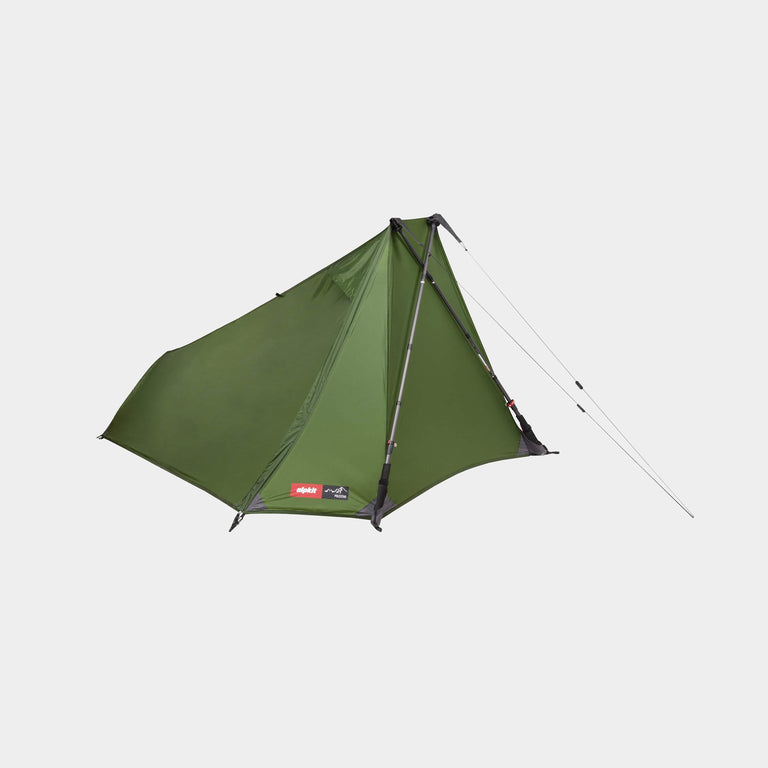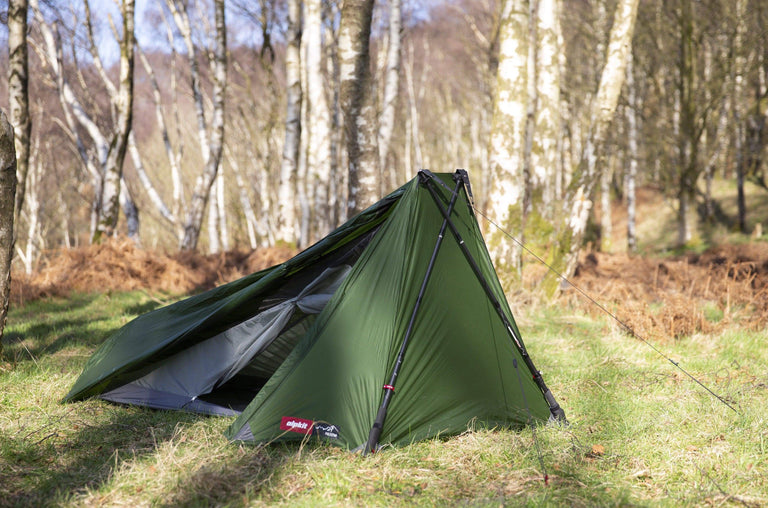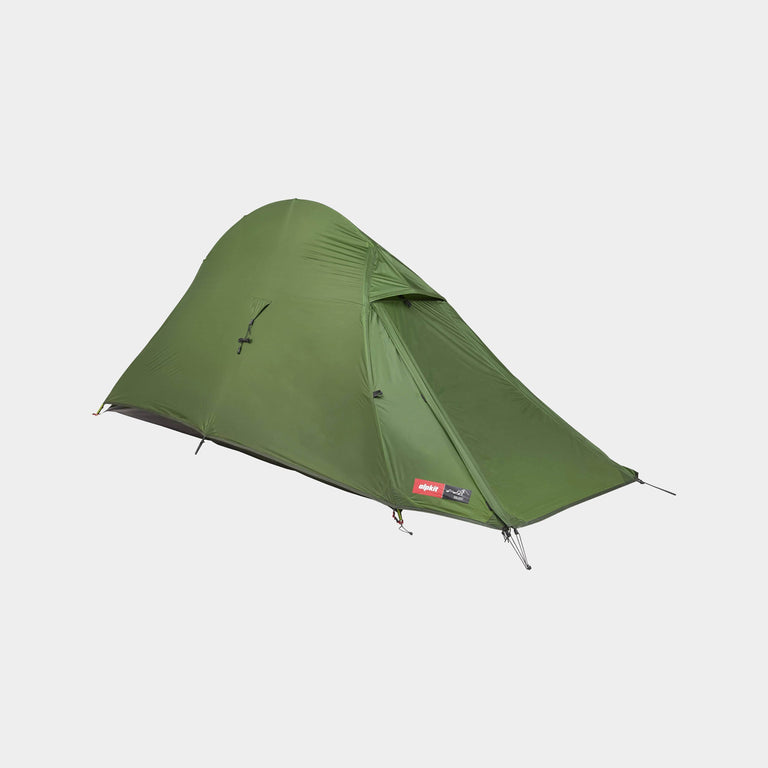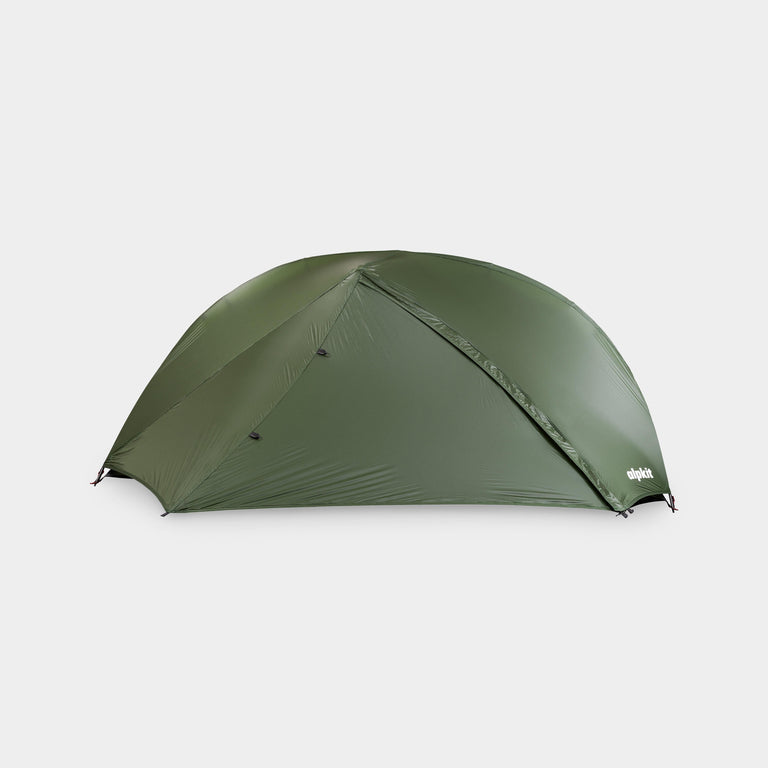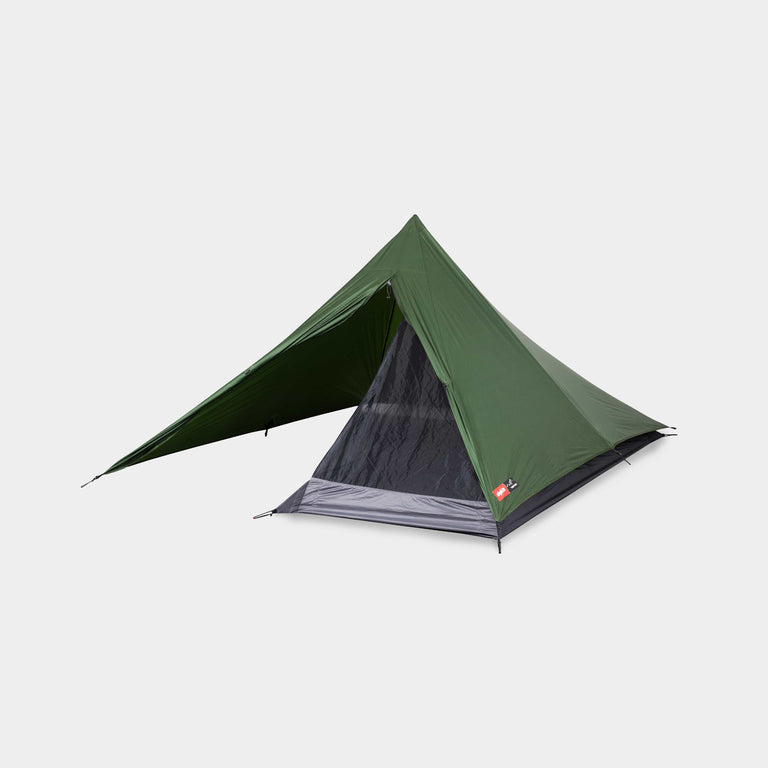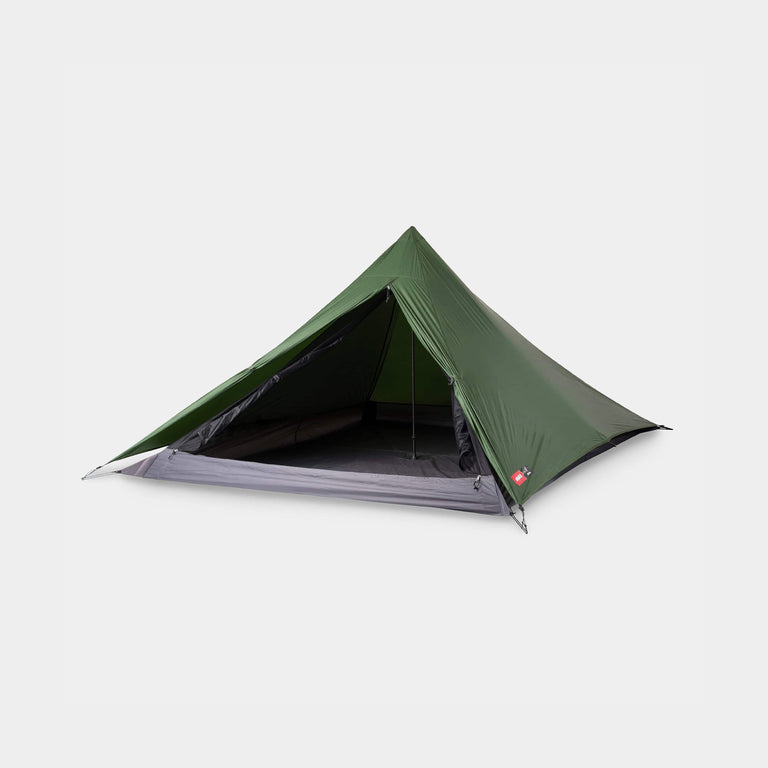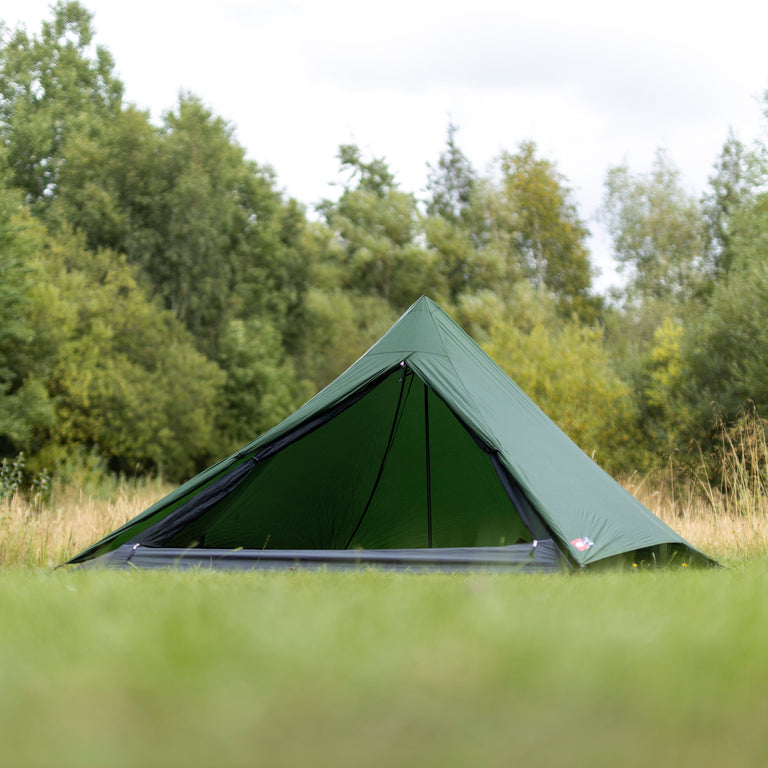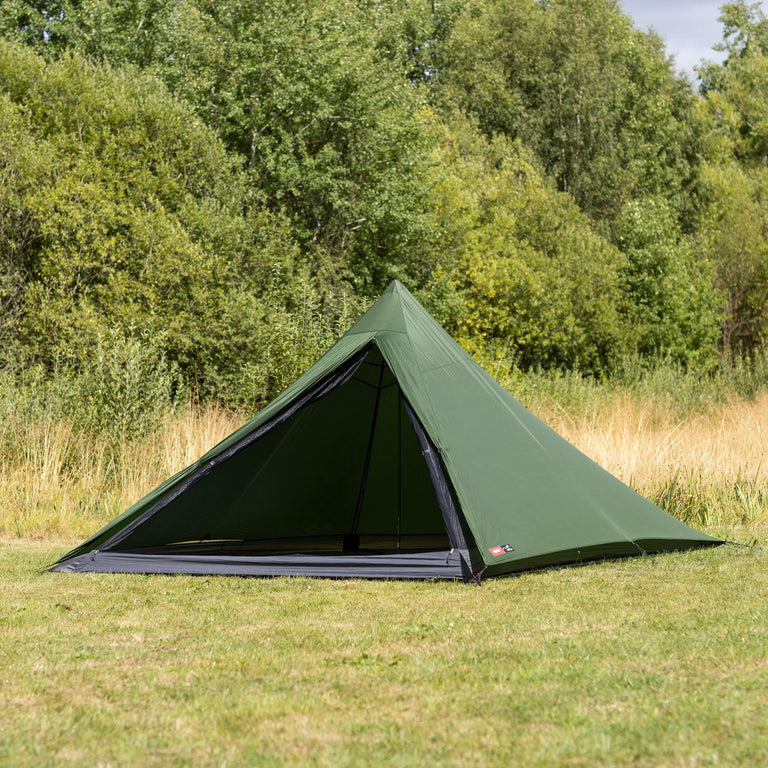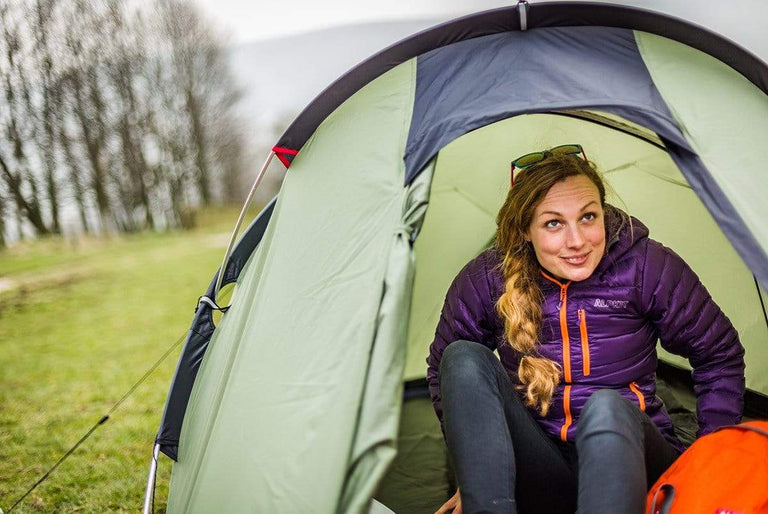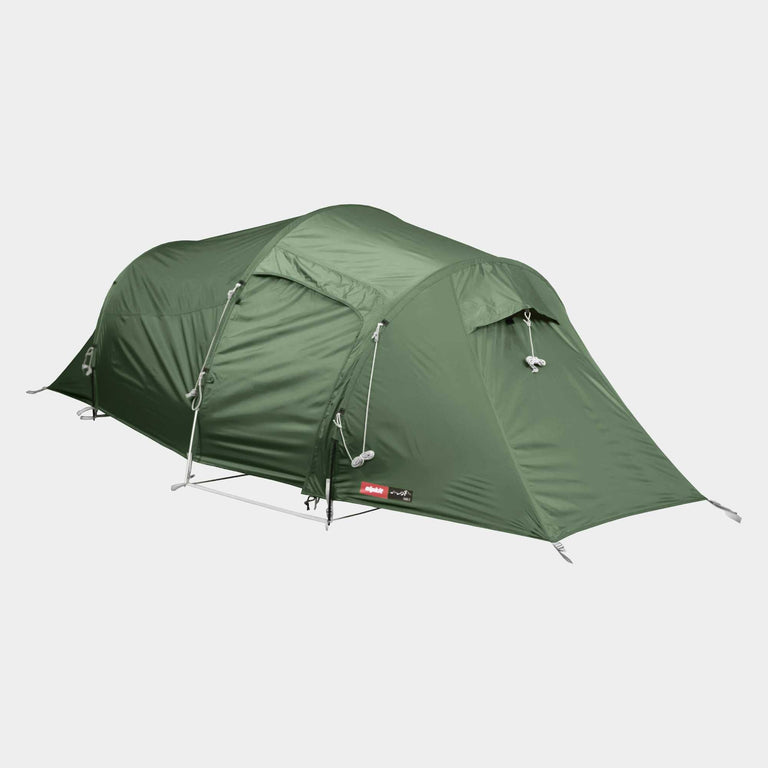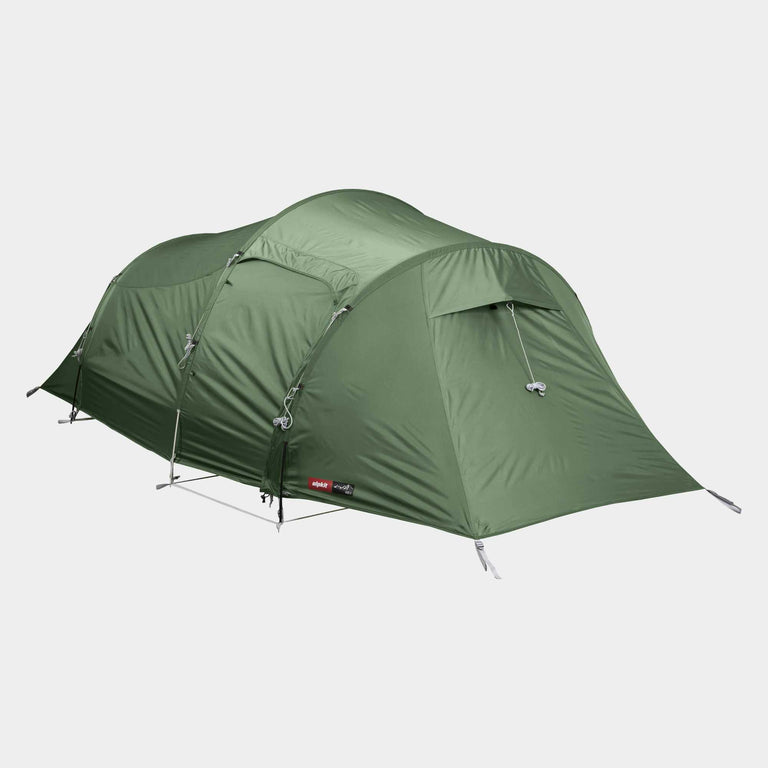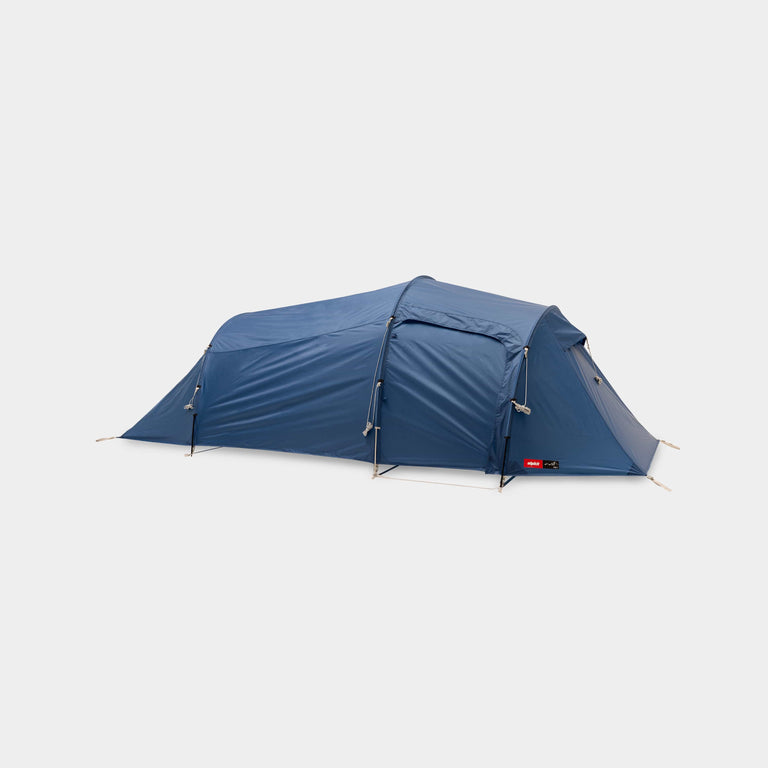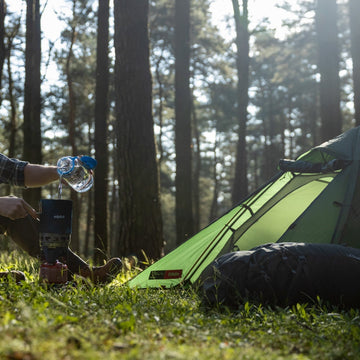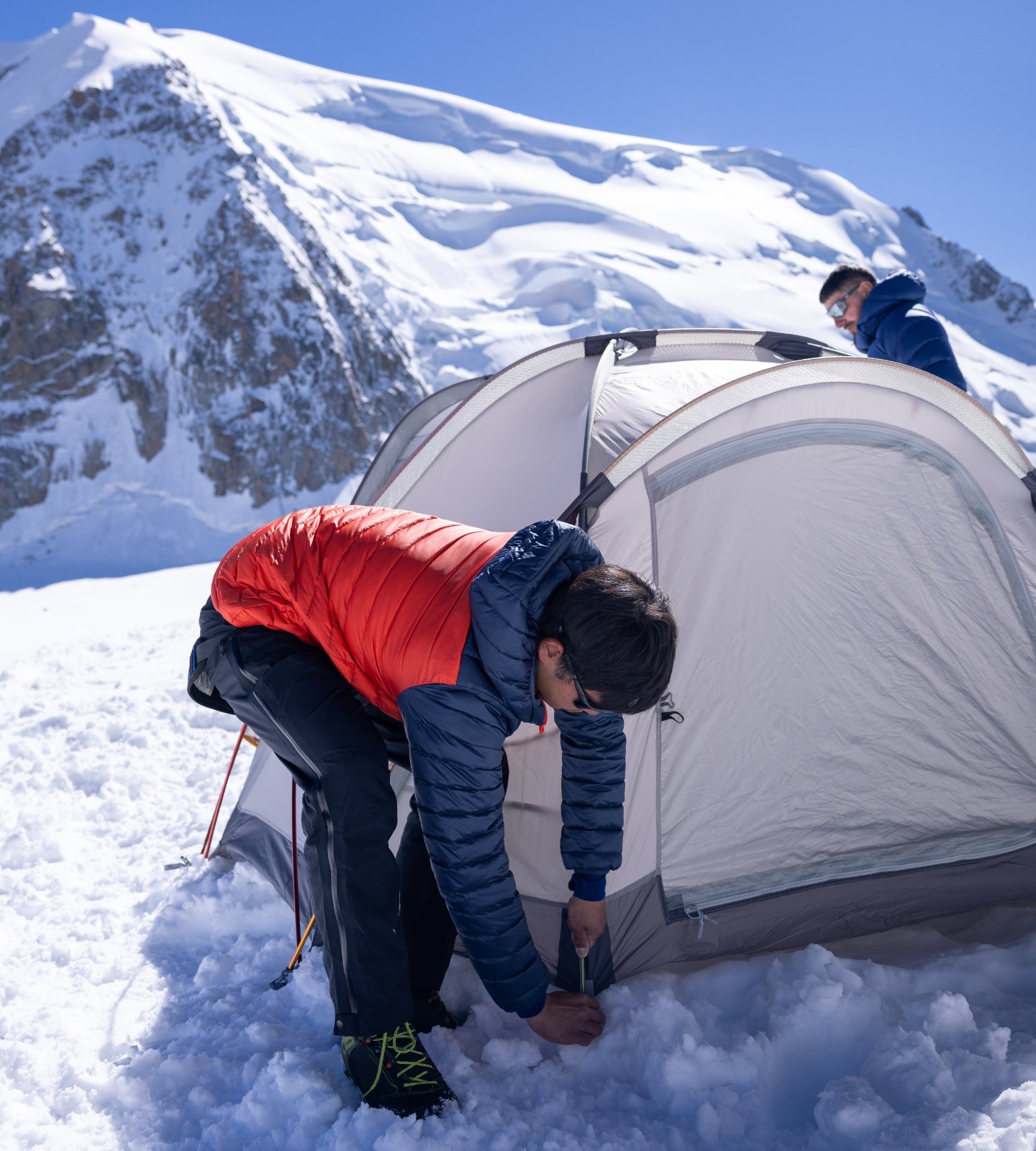
Plan your winter camp with confidence. Learn how to pitch, layer, sleep and adapt gear for cold-weather comfort and success.
As the temperatures drop and the nights shorten, the allure of winter camping becomes increasingly enticing. Venturing into the great outdoors during the colder months requires specialised knowledge and preparation to ensure a safe and enjoyable experience. In this comprehensive guide, we'll cover everything you need to know to make the most of your winter camping trips.
How to go camping in winter
- What to wear for camping in winter
- How to pitch your tent in winter
- How to keep your tent warm and dry in winter
- What’s the best winter camping stove?
- How to sleep warm whilst winter camping
- How to go winter camping with the kit you’ve got
What should you wear for camping in winter?
Dressing in multiple different layers allows you to control your body temperature throughout the day and avoid rapid cooling. An insulated jacket provides lots of warmth in the evenings for very little weight and pack-size.

Full waterproofs are always a good idea; getting cold and wet can be dangerous in winter and their fully windproof fabrics can be used for extra protection, even in the dry. An all-in-one insulated waterproof can provide you with great convenience and simplicity.
Here are some clothing tips that can make a big difference to your camping comfort this winter:

Take dry thermals
And change into them as soon as you get in your tent! This stops you getting cold and shivery when body moisture evaporates from your base layers. Warming up after cooling down uses much more of your energy reserves – and you need those for a good night’s sleep!
Merino base layers have the best warmth to weight ratio and are the most breathable for sleeping in.
Keep tomorrow’s clothes warm
Putting tomorrow’s clothes in a dry bag at the bottom of your sleeping bag keeps them warm for the next day so you don’t use more energy heating them up.

How to pitch your tent in winter
Take time to choose your pitch
Check the ground thoroughly to ensure there aren’t any hidden watercourses or similar buried in the snow. Avoid pitching in sites where windblown snow will accumulate – e.g. too close to a boulder or a wall. Also be aware of places that might be subject to avalanche. If you aren't sure, then move to lower, safer ground.
Don’t camp under snowy trees
Camping under snowy trees looks idyllic but snow or branches could easily fall on you in the night. When camping in woodland, pitch under gaps in the canopy.
Use sticks instead of tent pegs
When the ground is too snowy or frozen to peg your tent out conventionally, a foot-long stick threaded through the pegging loop and buried under the snow should do the trick. If sticks aren't abundant, then you can use a drybag filled with snow, skis, poles or stationary elk.
Stay alert to snowfall
Keep an eye on any snow accumulating on top of your tent. Tell-tale signs include sound becoming muffled and the tent interior getting darker. If snow does start to accumulate, then it may be necessary to leave the tent to clear it during the night, even in a 4-season mountain tent.

How to keep your tent warm and dry in winter
Don’t get snow in your tent
Make sure you brush off your clothes before getting in your tent to avoid any excess moisture build-up. We know how tempting it is to hurl snowballs at your mate but getting snow in your tent increases the amount of condensation.
Bury your flysheet
In deep snow and very windy conditions, it can also be a good idea to bury the edges of the flysheet in the snow to prevent windblown snow from getting in and melting.
Vent your tent
Pitching your tent at 90° to prevailing winds creates airflow in your tent, minimising condensation. You can also open and close the doors a little to control airflow.
Cook outside your tent
It can be tempting to cook inside your warm, dry porch. But cooking inside your tent increases condensation inside your tent, which will freeze overnight and could melt again in the morning dripping all over your kit.
What’s the best camping stove for cooking in winter?
The best gas canister stoves for winter are remote canister stoves with a pre-heater tube. These stoves allow you to burn gas at lower temperatures. Alcohol burners are also ideal stoves for winter camping as alcohol burns effectively at very low temperatures. That said, you may find it takes a long time for your water to boil – up to twice as long as gas/liquid fuel stoves. Multi-fuel stoves are more powerful and can be pressurised to counteract the effect of low temperatures and high altitudes on the fuel.
For shear convenience an all-in-one stove like the Brukit is hard to beat. It is ideal for boiling water fast, which makes it great for hot drinks, soups and rehydrating camping food.

What’s the best fuel for cold weather?
Alcohol burns at low temperatures and liquid petrochemical fuels can be pressurised to burn effectively. For ease, we still prefer gas cannisters but be careful which ones you buy. Make sure you opt for a ‘Winter Fuel Mix’. These canisters contain higher levels of propane and isobutane, which burn at lower temperatures.
How to improve your stove’s efficiency in cold weather
Keeping your fuel warm will help it to burn more efficiently. You can keep metal canisters and fuel bottles warm by storing them in your sleeping bag or insulated jackets. Adding a camping stove stove windshield will also drastically improve efficiency – just don’t stand it too close!
What to cook for winter camping
Foods low in moisture stand less chance of freezing and will therefore be easier to eat. Ready-made dehydrated foods are easy winter camping meals and are often the best way to fuel up quickly without spending a long time cooking outside your tent.

How to sleep warm when winter camping
Keeping warm when winter camping isn't just about choosing a sleeping bag> with a 4 season rating or a subzero temperature limit. A myriad of factors influence how you sleep when camping out in winter conditions, so we’ve devised an acronym to remember them by: S.L.E.E.P. (neat huh?)
- S = Surface (what are you going to sleep on?)
- L = Layers (what will you wear inside your sleeping bag?)
- E = Eat and drink (have you got enough fuel to keep warm?)
- E = Extremities (are your feet and hands going to stay warm?)
- P = Protection (how are you going to stay dry?)
Surface – What are you going to sleep on?
Some research claims that heat loss through the ground can be up to three times that of heat loss by air. This makes your sleeping mat vital to getting a good night’s sleep.
When you lie in your sleeping bag, the lofty down is compressed and becomes less insulating (which is inevitable unless you have levitation mastered). This means that your sleeping mat needs to be a good insulator, as well as a comfortable surface to sleep on.
Self-inflating mats are a good compromise of comfort and insulation, although they are susceptible to cold spots at the hips and shoulders. Often the best solution is combining a comfortable inflatable or self-inflating mat with a traditional closed cell foam roll-mat.

Layers – What will you wear inside your sleeping bag?
Staying warm is number one priority when winter camping. But overheating and perspiring can result in a build-up of moisture inside your sleeping bag’s filling. This makes it less effective and will cause your bag to freeze when temperatures really drop.
Spare dry layers are essential for helping to regulate your temperature at night. Wearing multiple breathable layers that are easy to take on and off is often the best solution. The damp, sweaty clothes you’ve been wearing all day will cause you to cool faster (a damp garment can cause you to lose heat as much as 25x faster than dry) and make your sleeping bag fill damp.
A sleeping bag liner will protect your sleeping bag from loft-eroding damp and skin oils. Even silk liners will only add a couple of degrees max to your system but they will keep your sleeping bag’s insulation at its most effective for longer.
Eat & Drink – Do you have enough fuel to keep warm?
Think of food as fuel for your own internal fire. When the fuel runs out, so does your body’s capacity to generate heat. We sort our winter camping food into three general categories:
- Simple carbohydrates: chocolate, energy bars, sweets and carbonated drinks (basically all the good stuff). These quick-hit sugary foods are great for a quick energy boost when your blood sugar is low, but that Mars Bar you had for dinner won’t keep you warm through the night.
- Complex carbohydrates: pasta, rice, porridge. These carbohydrates take longer for your body to break down, releasing energy more slowly throughout the day and keeping you going for longer.
- Fats and proteins: meat, fish, cheese, nuts, pastry (mmm. pastry.) Your body takes a long time to break down these foods, keeping you full for longer and warm through the night.
It’s important to keep hydrated in winter as your body needs water to convert all that food into energy. Cold weather can numb your thirst mechanism, preventing you from feeling thirsty when you need water. Your body also needs to warm and humidify the cold air that you’re breathing, causing you to lose a significant amount of water when exhaling.

Extremities – Will your feet and hands stay warm?
Your head, hands and feet are packed full of blood vessels. This means that they are the first parts of the body to feel the cold. If your extremities are cold, the rest of your body will soon follow suit and you’ll struggle to fall asleep. Simply donning a dry hat, gloves, and socks will help to keep you warmer.
Protection – How will you stay dry?
Are you sleeping in a bothy, a tent, a snow hole, an Alpine hut? It’s worth considering the following practices:
- Hang your damp kit out to dry in the morning and make sure you have a plan for drying your kit if you do catch a soaking.
- Air your sleeping bag regularly to avoid a build-up of moisture from perspiration – this moisture can freeze in low temperatures. You can lay your bag over your tent in good weather, but just opening it up inside the tent for a while will make a difference.
- Keep your sleeping area draught-free by building windshields or staking out extra peg-out points when necessary.
- Use the hood and neck baffles of your sleeping bag to stop any ‘bellows action’. Creating a good seal around your head and neck prevents your natural movements from pumping warm air out of the bag and sucking cold air in.
- Use a bivvy bag in very cold conditions as a vapour barrier. This reduces the amount of external moisture your sleeping bag will absorb.

How to go winter camping with the kit you’ve got
You don’t need to go out and buy a whole cupboard of specialist gear to go winter camping. There are plenty of ways to combine aspects of your existing set-up, using just the gear you have already.
Tent
Of course, a specialist 4-season mountain tent would be the best tent for the job. But many 3-season tents are surprisingly versatile. Keep an eye out for:
- Freestanding (or geodesic) tents. These are better suited to snowy conditions as they aren’t as reliant on guy ropes and pegs as other tent designs.
- A fly sheet that reaches the ground with a few extra stakeout points to provide wind protection.
- A high-walled bathtub-style inner tent for protection from the wind and the snow.
- Steep tent walls to shed snow.
- Vestibules for keeping your wet gear covered without bringing it into your tent.
- Top vents to prevent condensation
You can also make a few upgrades to your 3-season tent, such as stronger guy ropes and snow stakes.
Remember that 3-season tents come with limitations: keep an eye on the weather, avoid heavy snow, and test out your set-up up close to home before you commit to a trip further afield.
Sleep system
You can easily combine a simple closed-cell foam roll-mat with your inflatable sleeping mat to provide extra insulation from the cold ground.
Depending on what sort of sleeping bag you have, there are also a few hacks you can use to make it a bit more suitable for colder conditions. You could:
- Add a down quilt
- A sleeping bag liner will add up to a couple of extra degrees of warmth and protect your insulation.
- Wear an insulated jacket and extra layers inside your sleeping bag. Many fast and light campers prefer the insulated jacket/lighter bag combo to a heavier bag.
- Use your water bottle as a hot water bottle
Remember: these set-ups have their limitations and more extreme conditions call for a more extreme gear. Be aware of your sleep system's limitations and test it out closer to home before venturing further afield.

There’s no season like snow season
A lot of the tips and tricks for winter camping feel like pure common sense. But the stakes are much higher (no pun intended!) in winter. Getting even a few things wrong could resort in a miserable camping trip. or worse. As long as you get your clothing right, pitch well and keep fed and hydrated, there’s no reason why you can’t camp all year round too.



